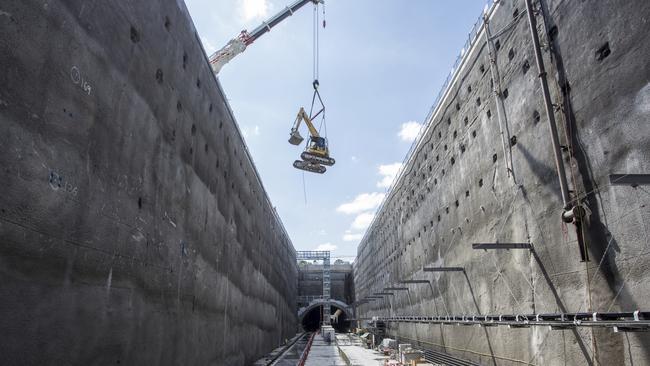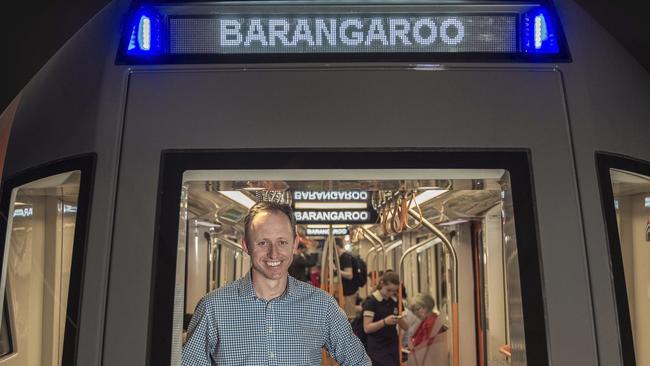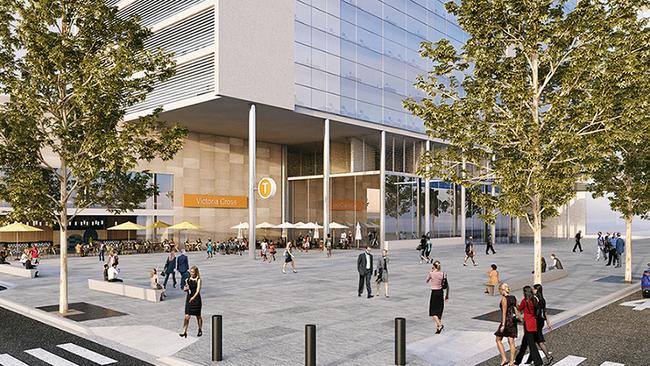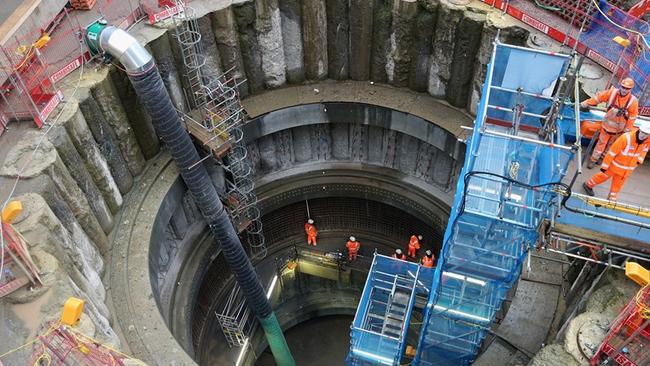Dozens of buildings to be demolished for Sydney Metro as Australia hit by transport construction boom
MULTIPLE transport projects are kicking off across Australia. And if experience overseas is anything to go by, we’re headed for a world of pain.

Travel
Don't miss out on the headlines from Travel. Followed categories will be added to My News.
THE centres of Australia’s largest cities are set to turn into giant construction sites as an unprecedented wave of public transport projects come to fruition.
But while planners assure residents and commuters alike that inserting multi-billion dollar new tram and train lines will be akin to “keyhole surgery”, the experience abroad has been more like radical and invasive surgery with roads closed, buildings demolished and neighbourhoods split in two.
In London, celebrities including Stephen Fry and Benedict Cumberbatch have joined forces to try and save parts of the famous neighbourhood of Soho, threatened with the wrecker’s ball for the construction of a new underground rail line.
Sydney Metro, the government body building a new $11 billion line from the north shore to the inner west via the CBD has confirmed 52 buildings would need to be demolished to allow for construction to begin in 2018. Around 20 of these would be in the heart of the city including towers 22 stories high.

The construction of the metro, connecting Crows Nest and Chatswood to Bankstown, joins the city’s new light rail which is gradually shutting down the city’s main thoroughfare of George St. The next block — from Market St to Park St — is due to be fenced off from December 2.
MELBOURNE, SYDNEY, CANBERRA, GOLD COAST
Meanwhile, new tram lines are planned for Canberra and the Gold Coast and an underground rail link is on the cards for Melbourne’s city centre.
“It’s probably the biggest investment in public transport we’ve seen since the Harbour Bridge,” Adjunct Professor of urban transport at the University of Technology Sydney, Gary Glazebrook told news.com.au
Sydney’s current network was hamstrung by poorly designed CBD stations that weren’t built to cope with the sheer number of passengers which now stream through them, he said.
“The capacity limit right now is Town Hall and Wynyard stations. They were built 90 years ago and they are more or less at capacity so we need additional stations and we need new rail lines.”
In Brisbane, which has only one railway bridge crossing the river, a conveyor belt of plans for new lines have come and gone. The latest, dubbed the Bus and Train Tunnel, that would have involved tearing down the city’s transit centre, was cancelled by the Palaszczuk Government in April.
Melbourne was facing a similar capacity crunch, Prof Glazebrook said, with the Andrews’ Government looking to a build an $11 billion new underground rail link to bisect the Hoddle Grid from north to south taking pressure of the current city loop.
RAIL LINES A CENTURY OLD
“In both Melbourne and Sydney’s rail networks the choke point is the CBD. Both cities were well endowed with transport in the 1920s and 1930s and now, 100 years later, both cities need new investment.”
This morning, Victorian transport minister Jacinta Allan announced the first tender for work on the Melbourne Metro Rail project which will see hundreds of millions of dollars spent moving gas and electricity mains in preparation for major construction.
But in a sign of the difficulty in balancing up the needs of commuters desperate for new transport infrastructure and local communities in the way of new lines, the Victorian Government, to the chagrin of campaigners for better rail services, has dropped an interchange between the new Metro and existing services at South Yarra.

While homeowners in North Melbourne wait nervously to see if their properties will be sacrificed to the bulldozers, the Government has rejected major works in busy South Yarra due to the sheer complexity of building the station and the destruction it would cause. Not only has the $1 billion price tag made planners think again, they’ve also bristled at the thought of demolishing hundreds of homes and part of the popular Jam Factory shopping centre in the densely packed neighbourhood, reported the Age.
In contrast, Londoners have become used to having huge chunks of their city hidden behind hoardings and historic buildings disappear overnight for the construction of the $34 billion Crossrail project which will link up the city’s east and west.
For many it’s been a painful journey with landmarks such as Soho’s Astoria Theatre, which has echoed to the sounds of U2, the Arctic Monkeys and Kylie Minogue, felled for the sake of a new ticket office and escalator shaft.
STEPHEN FRY
Talking to the Guardian prior to the Astoria’s 2009 demolition, Alan McGee, founder of seminal British music label Creation Records, said “In Paris or Mexico places like this don’t get knocked down, they get revamped. It’s criminal they’re knocking down these iconic buildings.”
In September, Stephen Fry joined calls to save the Curzon cinema, another Soho institution, which is in the path of a second Crossrail line.
“The plan for the Curzon to be demolished to make way for a tunnel air vent, is deeply worrying,” the QI host told the Guardian.

“I was In London and a large part of the financial district has been taken over for Crossrail,” said Prof Glazebrook, “but if you want to keep the city going and upgrade public transport you really just have to do it.”
Project Manager of Sydney Metro, Rodd Staples, insisted the same outcome would not befall Sydney with historic buildings avoided and smaller building zones.
“In London, which we studied closely, they have different ground which makes it more difficult to build which typically means that need larger sites.”
Although, he admits, Sydney has past form.
“If you look at the way the existing railways in Sydney involved digging up major areas of the city like Hyde Park for years and years that was literally like open heart surgery.”
The Sydney Metro sites would be more like “keyhole surgery”, Mr Staples said, with most of the demolitions, which include the prestigious Tiffany’s jewellery store on Martin Place, needed for new station entrances rather than to gouge out the platforms.
FOOTY FIELD
“It’s like a football field, we have construction sites at each of the goalposts and then we dig towards the half way mark which reduces the amount of surface construction and impact.”
However, Mr Staples said: “at Crows Nest we will be doing a bit more like open heart surgery because there’s more space to do it.” substantial portions of land would be needed in Marrickville and Chatswood where the tunnel boring machines will surface and a chunk of Martin Place will be off limits during the build.
Mr Staples also conceded Sydneysiders would likely have to contend with a period when both the light rail and Sydney Metro would be constructed at the same time.
NSW Opposition Leader Luke Foley said he backed the Metro project but light rail was not appropriate for the city centre. Asked about the potential for two major transport projects being built simultaneously, he said, “Sydneysiders are pragmatic, they’ll cop short term pain for long term gain but what I question is whether George St light rail will deliver the long term gain.”
“It might be disruptive,” said Prof Glazebrook, “but they have to get on and build the Metro. We can’t waste any more time.”
- with AAP.
Follow the conversation at @newscomauhq | @benedictbrook
benedict.brook@news.com.au
Originally published as Dozens of buildings to be demolished for Sydney Metro as Australia hit by transport construction boom



